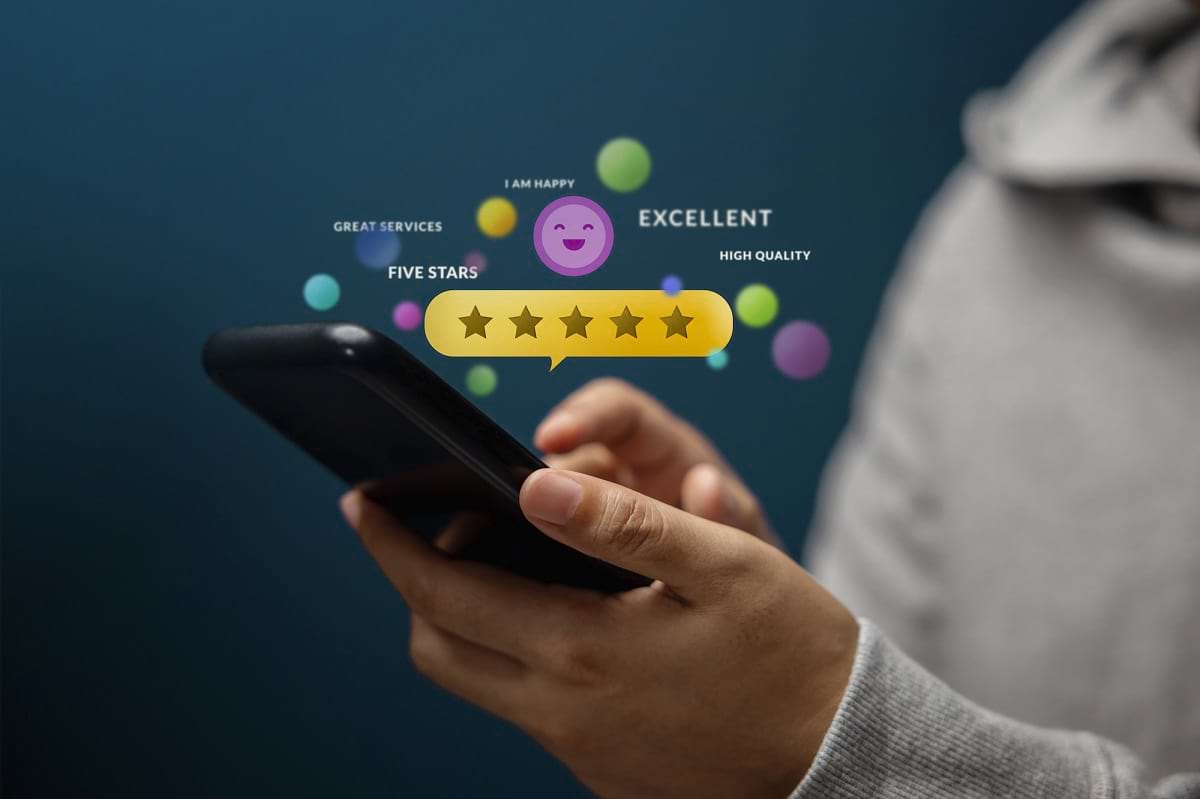
Why are first impressions important? Top 5 breakdown
We’ve all heard about the importance of first impressions, but do you know how important they are for customer satisfaction? Find out here.
Updated on April 22, 2024
Published on August 17, 2023


Brand loyalty. It’s what businesses crave and what keeps consumers coming back. But happy customers don’t just come out of thin air, they’re earned. And once that trust is earned, satisfied customers are more likely to stay with your company and spend more money. In fact, McKinsey & Company reports that improving your CX can increase sales conversion rates by 10-15%!
But, if you’re like many leaders, you may not know where to begin when it comes to improving CX. Keep reading to learn four key customer experience components and some best practices for incorporating them into your business strategy.

Customer experience encompasses all the thoughts, feelings, activities, and behaviors during a buyer’s journey. When the customer experiences you provide lead to satisfaction, the results will be positive for your business. You’ll see greater customer loyalty and lifetime value, and you may even create brand advocates that can facilitate effective, word-of-mouth advertising on your behalf.
Providing great customer experiences is vital, especially in a time when 59% of consumers will leave a brand after just one bad experience. What’s more, customers are more than twice as likely to buy from a company after a positive support experience (87%) than after a negative one (35%). So when you improve customer experience, you can improve customer retention and positively impact your entire organization.
Your customer experience strategy may have goals like empowering customers to have more control of their buying journeys. However, your objectives should be specific and measurable to ensure you can evaluate your team’s performance in attaining them and adjust your plans when necessary.
Examples of customer experience objectives include:
By constantly evaluating and tweaking your customer experience strategy, you can ensure that you’re providing the best possible experience for your customers and ultimately driving success for your business.
In today’s world, customers take different paths when making purchases, making it crucial to view CX as a series of touchpoints instead of a set path. To create great customer experiences, there are four critical components you need to consider.
Customer satisfaction is a measurement of how happy, fulfilled, or content your customers are with your products or services. It’s directly related to how well your business meets your customers’ needs and lives up to their expectations.
Customer satisfaction depends on two elements:
Perception is how your customers feel about your brand and the opinions they form on their buying and customer journeys. Measuring perception requires collecting customer feedback and watching behaviors to understand how customers think about your business.
Interaction includes activities such as customers making purchases or speaking to your customer service team. However, interaction can also occur when a customer reviews your website or reads an ad, so identifying and optimizing all interaction points is crucial.
CRM stands for customer relationship management, which refers to the way your company interacts with customers. Effective CRM is characterized by a customer-centric approach.
By prioritizing the customer, you can provide better experiences and increase satisfaction. This is simple when your and your customers’ expectations are aligned, but disconnects, like the ones below, can occur and it’s important to find ways to overcome them.
At times, customers may have unrealistic expectations that lead to friction when interacting with your product. Friction can also occur when customers do not get the desired outcome from using the product, like when a vending machine fails to release a snack after inserting coins. To enhance the customer experience, it’s important to identify and address these points of friction by modifying the product or improving the customer interaction process.
It’s unrealistic to expect all customer interactions to be completely smooth, so it’s crucial to have a skillful customer service team to handle any issues that may arise. Effective communication with customers can help resolve any points of friction and improve the overall customer experience.
Empowering your customer service agents with the CX technology solutions and training they need to resolve issues in a way that leads to customer advocacy and satisfaction is vital.
In today’s digital world, customers can interact with businesses through various channels. To provide the best experience, it’s important to optimize every touchpoint.
Customers expect a seamless and cohesive experience across all channels. This means your website should have the same look and feel as your brand, and customers should be able to access information and complete transactions consistently across all channels.
It’s crucial to prioritize appropriate communication at every interaction with customers. How brands treat their customers greatly impacts their purchasing decisions, and they prefer to buy from brands that treat them well. Your brand’s outgoing communications play a significant role in shaping customers’ perceptions and interactions with your product, while your customer service team resolves any issues or deescalates customer concerns that may arise.
Speaking of, effective internal communication is crucial for creating exceptional customer experiences. If different departments or business functions fail to communicate effectively, customers will notice it in how they are treated at various stages of their purchasing journey. It’s vital to optimize all communication channels and provide appropriate training to your team to ensure they communicate effectively.
The customer journey is the process a customer goes through when they start interacting with a brand and throughout their entire relationship with that brand. Successful companies don’t leave this process to chance.
They identify the steps their ideal customers take and guide others along that same path, from acquiring new customers to maintaining ongoing relationships. By mapping the customer journey, businesses can identify areas that need improvement and use that information to enhance the customer experience and satisfaction.
To develop an effective customer experience strategy, prioritize the needs of your target audience and implement best practices that align with these elements. Build your strategy around these key components to ensure a successful outcome.
Customers are usually willing to offer their thoughts on your business’s performance and how well you are meeting their expectations. Devise surveys or have your customer support team collect data about what you’re doing well and where you’re missing the mark. Then review those findings with your team to improve customer experiences and create great customer journeys.
Each customer experience component focuses on meeting or addressing customers’ needs. However, if your team falls short, it creates friction and increases the issue-resolution workload for your customer support team.
A smarter strategy is to know your customers well enough to anticipate their needs. Create customer personas for different demographics of your base, collect data, and research their preferences to help build strong customer relationships and customer loyalty.
Always be flexible and open to change. Customer behaviors and expectations are continually changing. So, you’ll need to adapt your experiences to ensure you continue having satisfied customers.

Customer satisfaction may seem very subjective, and you may think it’s only possible to describe it in qualitative rather than quantitative terms. However, there are effective ways to measure customer satisfaction and generate actionable insights for improving customer experiences.
A good place to start is by choosing KPIs related to your customer experience goals. You can track first response time (FRT), average resolution time (ART), first contact resolution (FCR), and customer retention rate. All these metrics indicate the quality of customer experiences your business provides.
Measuring customer satisfaction is crucial to understand their perceptions of your business and how they evolve over time. There are various systems to do this, such as Net Promoter Score (NPS) which gauges the likelihood of customers recommending your company to others, and CSAT which assigns a numerical score to customer satisfaction with specific aspects of your business.
CES, on the other hand, enables customers to rate the ease of interacting with your customer service team or other parts of your business. To ensure you provide top-notch customer experiences, it’s vital to set goals and track these key metrics consistently. This will help you stay on track and make necessary adjustments.
VoC programs enable you to collect feedback about your products, services, and business. Determine the best way to collect this feedback through one-to-one engagements, surveys, data collection via chatbot, or other methods.

Communication is the key to providing the best customer experiences. This involves not only communicating with your customers but also listening to their feedback. By incorporating customer experience components into their growth strategies, successful business leaders can deliver world-class customer experiences that meet the expectations of modern consumers.
(Check out how the Mike Morse Law Firm uses communications and collaboration technology to disrupt the status quo and deliver exceptional service.)
Today, competition is fierce and companies are constantly vying to one-up each other. A key strategy for gaining an advantage is by providing customers with an exceptional experience. However, it’s not just about making customers happy at the moment — it’s about building a long-lasting relationship with them.
This requires a customer-centric approach that involves listening to feedback, analyzing data, and making changes that will keep customers coming back for more. By prioritizing the customer, you can build loyalty, establish relationships, and drive growth.
People now expect quick, easy, and personalized interactions. Thanks to technologies like AI chatbots and machine learning, you can cater to these demands and provide customers with the experience they desire. By analyzing customer data, you can also gain insights into what people want and like.
However, it’s essential to remember that even with all this technology, it’s crucial to have friendly and helpful customer service reps who can provide emotional support and solve complex problems. Companies need to be flexible and creative to keep up with the times and ensure customer satisfaction.
Find out how Zoom can help you transform your customer experience with our CCaaS software and intelligent virtual agent solutions.